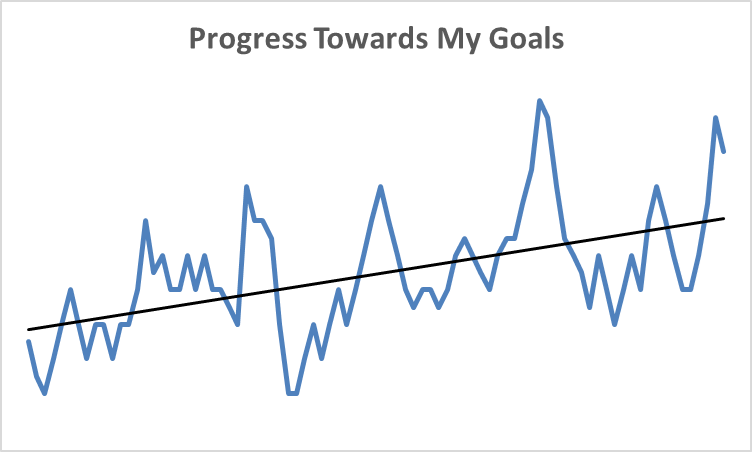I have been thinking of myself as a scientist since I was a child. Much of my early work was qualitative in nature and is mostly undocumented. This means that I will need to write some papers to explain the ideas I developed through decades of observation and study. I have some published documents and many hundreds of papers I wrote and have sitting on my hard drive. I also have a number of posts that I wrote while I was interacting with others on LinkedIn. I will try to bring some of this together here. My work can be broken down by whether it is at the individual level, the population level, or at the intersection between the individual and population levels.
The Slow Change Method
One of my first attempts at discovery at the individual level was an effort to invent “the quick change method.” I had been reading self help books and listening to self help audio tapes for several years and had been disappointed with the results. I would read a self help book or listen to a set of tapes, and then attempt to implement the cognitive and behavioral changes that were recommended. This typically resulted in an improvement for a week or two and then a return to my previous thought and behavioral patterns. I did not seem to make any “real” progress. These books and tapes seemed to be kind of worthless. I decided that if I could develop some method to produce reliable change in a positive direction in a short period of time, I could get rich as a self-help guru. I decided to invent “the quick change method.”
After about ten years of effort, I took stock of what I had learned. I found that I had made considerable progress towards my goals. I was better adjusted, happier, and more productive. In the process of improvement, I had still gone through the ups and downs I had experienced previously, but the ups had been progressively higher and the downs had not been as low. I had taken a zig-zag path to progress. My path to reaching my goals had been something like the one shown below.

I realized with dismay that I had failed to achieve my original goal of inventing “the quick change method.” It had taken ten years of hard work and effort to make the positive changes I had made. My dream of inventing the quick change method had resulted in a colossal failure. I had invented the exact opposite! I had invented “the slow change method.” I could not envision anyone buying my self help book urging people to spend years of hard effort, experiencing many successes and failures, to achieve their goals. I abandoned this project and started looking for some other method to get rich. I did not realize until years later that I had actually learned something useful. Change is a zig-zag process.
Spending Time with Prisoners in Jail
My next discovery came as the result of a volunteer effort. Much of the progress I had made was due to my participation in a group counseling session every two weeks. The counseling sessions were lead by Father Patrick Riley, a catholic priest working for the St. Cloud Diocese. Father Pat was an extraordinary listener, and being able to talk through the challenges I was experiencing was incredibly therapeutic. Once I realized how much he had helped me, I decided to “pay it forward.” When I told him what I wanted to do, he suggested that I might volunteer at the local jail. I was accepted as a volunteer and started attending weekly restorative justice group sessions at the local jail.
I found that the inmates seemed to be going through a process that looked like the one I had experienced. They would talk through their problems and seemed to make progress. They would typically get released at some point when they had served their sentences. Some of the prisoners who were released would come back in a few weeks or months. These prisoners then made even further progress towards understanding what they needed to work on. After this in and out cycle happened a few times, many prisoners would disappear and not come back. I would hear from other inmates that these people were doing well on the outside. It appeared that prisoners also followed a zig-zag path to improvement.